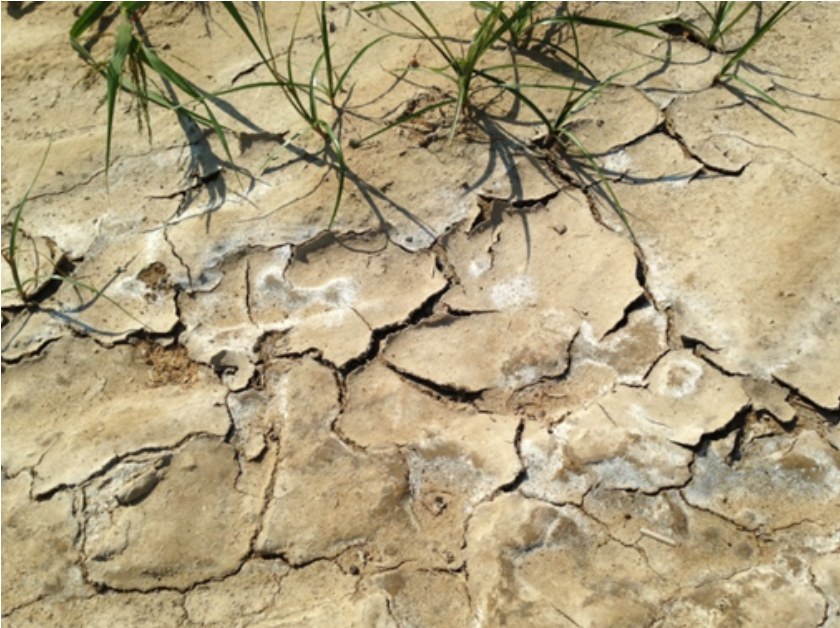
Fact Sheets And Publications
Agriculture and Climate Change: An Overview
October 2025 | Megan Murtaugh, 2025 Extension Scholar, University of Delaware
Corresponding Author: Jennifer Volk, Ed.D., Environmental Quality Specialist, Associate Director
University of Delaware Cooperative Extension

Introduction
The effects of climate change can have extensive impacts on agriculture and farmers. Growing seasons have been getting longer with more extreme temperatures. Precipitation patterns have been changing, with some increasing frequency and severity due to global warming. These changes present risks, including heat stress on crops and livestock, damaged infrastructure from extreme storms, and introducing long-term challenges for crops, breeds, and practices.
Direct Effects of Climate Change on Agriculture
Changes in climate vary by location. For example, agriculture in the south is expected to have warmer temperatures, while the north and east will experience extreme rainfall more frequently.
Delaware Temperature Trends and Projections
According to the Delaware State Climatologist's Office, Delaware has seen a three-degree rise in annual average temperature since 1900. Delaware’s Climate Change Impact Assessment report predicts that the annual average temperature and seasonal average temperatures are expected to continue increasing, along with more frequent extreme heat days and heat waves. Conversely, the number of days with extreme cold is predicted to decrease.
Temperature changes can affect the vegetative and reproductive stages of plants, resulting in potential inadequate chilling periods, leaves emerging earlier, and frost damage; pollen viability, fertilizations, and formation of fruit or grain; and smaller crop yields due to faster plant maturation under increased respiration rates. When plants are stressed, they are more susceptible to pests. As a result of warmer temperatures, we may see longer growing seasons and the ability to grow alternative crops while also facing new weed, insect, and disease pressures.
Delaware Precipitation Trends and Projections
Annual precipitation in Delaware has historically been highly variable. Future projections for precipitation are also variable, though most models predict increased annual precipitation, especially during the winter season. Additionally, more intense precipitation is expected.
These precipitation changes can result in flooded fields, runoff and erosion, which can drown plants, spread fungi, and create water quality issues in streams and rivers. Too little precipitation could lead to droughts, crop stress, and fire risks. Additionally, intense precipitation events can damage crops and infrastructure.
Delaware Sea Level Rise Trends and Projections
According to tide gauges off the coast of Lewes, Delaware, sea levels have risen locally more than 13 inches in the last century. Further, the Delaware Sea-Level Rise Technical Committee report of 2017 anticipates with a 98% probability that sea levels will rise another foot by the year 2100. Sea level rise projections are currently being updated, so these values may change soon based on more recent data and methods.
As sea levels rise, that puts pressure on wetlands to migrate inland, which they will do if not blocked by human infrastructure. Further, coastal farms are already experiencing salinization during high tide events and coastal storms. Salinization is when salty water rises out of neighboring wetlands, streams, and ditches and into agricultural fields, leaving behind salty soils when the water recedes. The salt content prohibits traditional agricultural crops from growing, and this occurrence will continue with rising sea levels.
Summary
The changes in our climate will have direct effects on agriculture. Additionally, farms and farmers are already challenged by existing economic, environmental, and social stressors. Awareness of potential climate change impacts and mechanisms to support adaptation is critical to maintaining agricultural sustainability.
About the Author
Megan Murtaugh, 2025 Extension Scholar, University of Delaware
Jennifer Volk (corresponding author), Associate Director, University of Delaware Cooperative Extension, Dover, DE (jennvolk@udel.edu)About this Publication
Original Publication Date: October 2025
Peer Reviewers
Alexis Brinsfield, Delaware Department of Natural Resources and Environmental Control, Dover, DE.
Jordana Cutajar, Delaware Department of Natural Resources and Environmental Control, Dover, DE.
References
Janowiak, Maria K, et al. “Adaptation Resources for Agriculture: Responding to Climate Variability and Change in the Midwest and Northeast .” U.S. Department of Agriculture, Oct. 2016.
Etumnu, C., Wang, T., Jin, H., Sieverding, H. L., Ulrich-Schad, J. D., & Clay, D. (2023). Understanding farmers’ perception of extreme weather events and adaptive measures. Climate Risk Management, 40, 100494. https://doi.org/10.1016/j.crm.2023.100494
DNREC, 2014, Delaware Climate Change Impact Assessment Report, Delaware Department of Natural Resources and Environmental Control. documents.dnrec.delaware.gov/energy/Documents/Climate%20Change%202013-2014/DCCIA%20interior_full_dated.pdf
Delaware Climate Office, 2025, climate.udel.edu/
Callahan, John A., Benjamin P. Horton, Daria L. Nikitina, Christopher K. Sommerfield, Thomas E. McKenna, and Danielle Swallow, 2017. Recommendation of Sea-Level Rise Planning Scenarios for Delaware: Technical Report, prepared for Delaware Department of Natural Resources and Environmental Control (DNREC) Delaware Coastal Programs. 116 pp. https://www.dgs.udel.edu/sites/default/files/projects-docs/DE%202017%20SLR%20Technical%20Report_Mar2018.pdf
UD Cooperative Extension
This institution is an equal opportunity provider.
In accordance with Federal law and U.S. Department of Agriculture policy, Cooperative Extension is prohibited from discriminating on the basis of race, color, national origin, sex, age, or disability.
